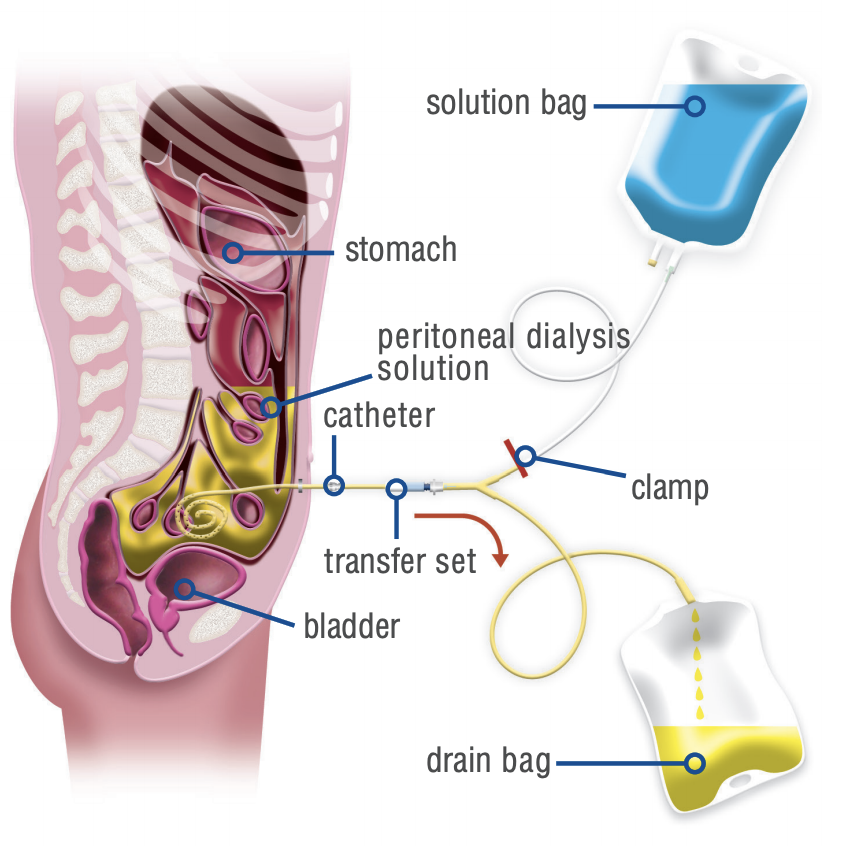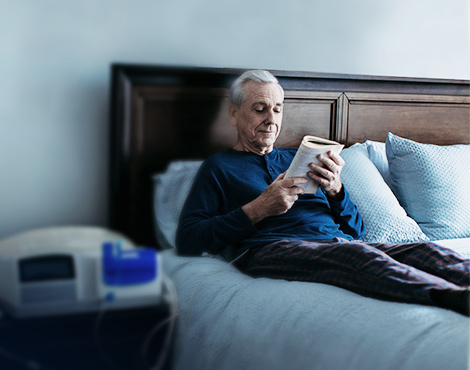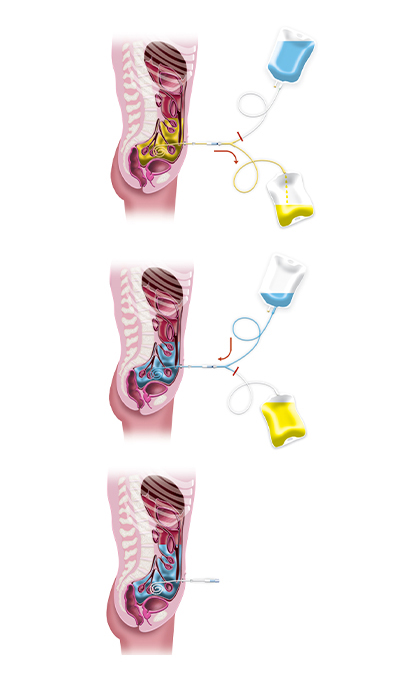Peritoneal Dialysis
PD is a Therapy Option for Many Patients with End-Stage Renal Disease

What is Peritoneal Dialysis (PD)?
Peritoneal dialysis (PD) uses the lining of your own abdomen, called the peritoneal membrane, to filter and clean your blood. This lining is where peritoneal dialysis (PD) gets its name.
During peritoneal dialysis (PD), a fluid called dialysis solution (or dialysate) passes into your abdomen through a catheter. Once the dialysis fluid has flowed into your abdomen, it stays there, cleaning your blood by absorbing any waste and excess fluid.
If you’re starting dialysis, peritoneal dialysis (PD) might be one of the treatment options available to you. Peritoneal dialysis (PD) is usually done at home and can even be done while you sleep. It is also possible to do peritoneal dialysis (PD) treatments while you travel. So, it might be the right therapy if remaining mobile or having a flexible treatment schedule are important to you.

Benefits of Peritoneal Dialysis (PD)
PD is a proven home dialysis therapy. It doesn’t require the use of daily needles and is usually considered gentler on your body. Also, because PD is performed daily, the blood is cleansed more frequently.
PD may offer patients many health and lifestyle benefits and may be the right treatment for you if you work, study or travel regularly and if it suits your lifestyle and medical and physical condition.1
Consult your clinician to determine the best dialysis option for you.
Types of Peritoneal Dialysis (PD) Therapy

CAPD Therapy
Continuous Ambulatory Peritoneal Dialysis (CAPD) is a manual form of PD. CAPD means that you "manually exchange" old solution for new solution multiple times every day. Dialysis happens continuously between 1 and 4 times per day, depending on your dialysis requirements. Each exchange takes about 20 minutes to perform.
Waste products and excess fluid can be controlled manually during the treatment process, which may reduce stress on your body. With CAPD, you may be able to eat more of the foods you enjoy and take fewer medications.
Consult your clinician to determine the best peritoneal dialysis option for you.

APD Therapy
Automated Peritoneal Dialysis (APD) is a form of PD done by a machine called a cycler. The cycler is programmed by your clinician to provide you with a dialysis treatment. Typically, an APD program lasts between 8 and 12 hours and is performed overnight.
APD therapy automates the delivery of dialysis solution to your body, along with draining the excess fluid and waste. Peritoneal dialysis may provide you increased flexibility with your diet and the number of medications you need to take while on dialysis.
Baxter's comprehensive PD Portfolio includes Homechoice Claria and voice-guided Amia cyclers, both enabled by Sharesource, a two-way, cloud-based digital health technology.
Consult your clinician to determine the best peritoneal dialysis option for you.

Remote Patient Management (RPM) with APD Therapy
Remote Patient Management (RPM) allows your clinician to follow your completed treatments and ensure you are on the right track, which may increase your confidence about doing your treatment at home.2
If your APD cycler has Remote Patient Management capabilities (RPM), it can collect accurate information about your home treatments daily and send it to your clinician at the hospital or clinic. Your clinician can monitor your therapy progress, change your machine programs remotely and discuss any problems you are having over the phone.
Learn More About Peritoneal Dialysis

How PD Works
Peritoneal dialysis is carried out through a catheter placed in the abdomen, where you exchange old solution for new solution.
Drain
The used and saturated solution inside the abdomen is drained. This solution contains waste and excess fluid.
Fill
After the abdomen is drained of the old solution, new dialysis solution is put in through the catheter to fill up the peritoneal cavity, which is located in the abdomen.
Dwell
When the new solution has been filled, the tubing and bags are removed. You wear only a short tubing set covered with a cap and can continue your normal activities. During this dwell period of time, the dialysis solution stays in the peritoneal cavity. This is when the dialysis occurs and the solution is collecting the waste and excess fluid from your body.

Learning to Perform PD
The idea of performing peritoneal dialysis (PD) at home may make you feel anxious, but it is actually quite a manageable process. Almost everybody can perform peritoneal dialysis (PD) with proper training. In most cases, this will usually require between 2 and 5 days of training, depending on what type of PD therapy you choose.3
Additional Resources

Baxter Empowers
We invite you to increase your understanding of what the kidneys do and what happens when they begin to fail, as well as review Chronic Kidney Disease (CKD) treatment options and the different types of dialysis available to you. Click the link below to visit our Baxter Empowers site and learn more from a variety of online educational tools.